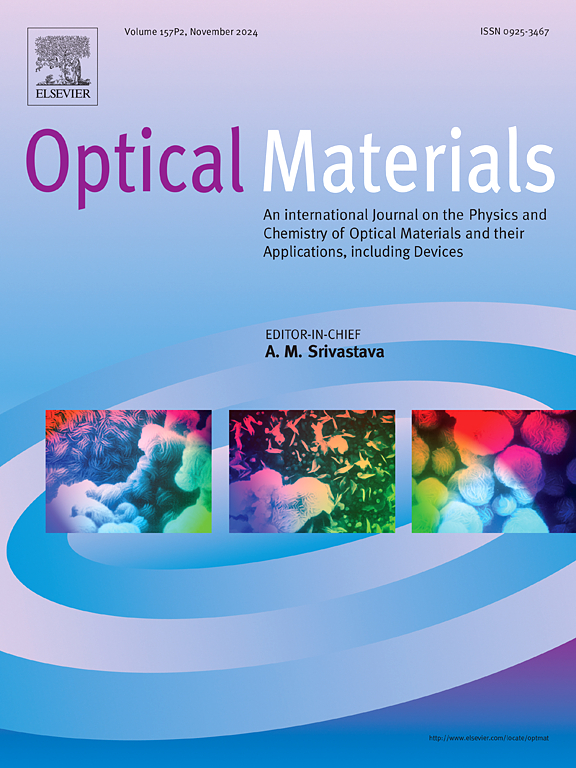Synergistic incorporation of MoS2 cocatalyst into ZnIn2S4 nanoflower architectures for efficient photocatalytic H2 production and selective benzyl alcohol oxidation
IF 4.2
3区 材料科学
Q2 MATERIALS SCIENCE, MULTIDISCIPLINARY
引用次数: 0
Abstract
Construction of efficient catalysts for photocatalytic hydrogen evolution and selective oxidation of coupled organics is an effective way to obtain clean, renewable fuels and high-value chemicals using photogenerated electrons and holes. Here, we successfully introduced the co-catalyst MoS2 into the ZnIn2S4 nanoflower sphere matrix, which can effectively separate electrons and holes, suppress electron-hole recombination, and realize the synergistic coupling of photocatalytic H2 evolution and selective oxidation of benzyl alcohol. By tuning the MoS2 loading, we optimized the active site density and charge transfer efficiency of the ZnIn2S4 catalyst, thereby enhancing its H2 evolution performance. It was also found that ZnIn2S4 exhibited the highest catalytic activity in the benzyl alcohol oxidation reaction with the addition of 3 wt% MoS2 and achieved the oxidation of benzyl alcohol to benzaldehyde. In addition, we investigated the effects of different sacrificial reagents on the catalytic performance, and the results further verified the universality and feasibility of the catalytic system. Notably, the catalyst demonstrated excellent photocatalytic degradation performance, achieving removal efficiencies of 98 %, 77 %, 76 %, and 70 % for rhodamine B (RhB), tetracycline (TC), oxytetracycline (OTC), and chlortetracycline (CTC), respectively. This work elucidates the critical role of MoS2 as a cocatalyst in enhancing charge separation and surface reaction kinetics, providing a viable strategy for designing dual-functional photocatalysts for simultaneous H2 evolution and organic transformations.

在ZnIn2S4纳米花结构中协同加入MoS2助催化剂用于高效光催化制氢和选择性苯甲醇氧化
构建光催化析氢和偶联有机物选择性氧化的高效催化剂是利用光生电子和空穴获得清洁、可再生燃料和高价值化学品的有效途径。本研究成功地将助催化剂MoS2引入ZnIn2S4纳米花球基体中,可以有效地分离电子和空穴,抑制电子-空穴复合,实现光催化析氢和苯甲醇选择性氧化的协同耦合。通过调整MoS2的负载,优化了ZnIn2S4催化剂的活性位点密度和电荷转移效率,从而提高了催化剂的析氢性能。ZnIn2S4在添加3 wt%的MoS2时表现出最高的催化活性,实现了苯甲醇氧化制苯甲醛。此外,我们考察了不同牺牲试剂对催化性能的影响,结果进一步验证了催化体系的通用性和可行性。值得注意的是,该催化剂表现出优异的光催化降解性能,对罗丹明B (RhB)、四环素(TC)、土霉素(OTC)和金四环素(CTC)的去除率分别达到98%、77%、76%和70%。这项工作阐明了MoS2作为助催化剂在促进电荷分离和表面反应动力学方面的关键作用,为设计同时进行H2演化和有机转化的双功能光催化剂提供了可行的策略。
本文章由计算机程序翻译,如有差异,请以英文原文为准。
求助全文
约1分钟内获得全文
求助全文
来源期刊

Optical Materials
工程技术-材料科学:综合
CiteScore
6.60
自引率
12.80%
发文量
1265
审稿时长
38 days
期刊介绍:
Optical Materials has an open access mirror journal Optical Materials: X, sharing the same aims and scope, editorial team, submission system and rigorous peer review.
The purpose of Optical Materials is to provide a means of communication and technology transfer between researchers who are interested in materials for potential device applications. The journal publishes original papers and review articles on the design, synthesis, characterisation and applications of optical materials.
OPTICAL MATERIALS focuses on:
• Optical Properties of Material Systems;
• The Materials Aspects of Optical Phenomena;
• The Materials Aspects of Devices and Applications.
Authors can submit separate research elements describing their data to Data in Brief and methods to Methods X.
 求助内容:
求助内容: 应助结果提醒方式:
应助结果提醒方式:


